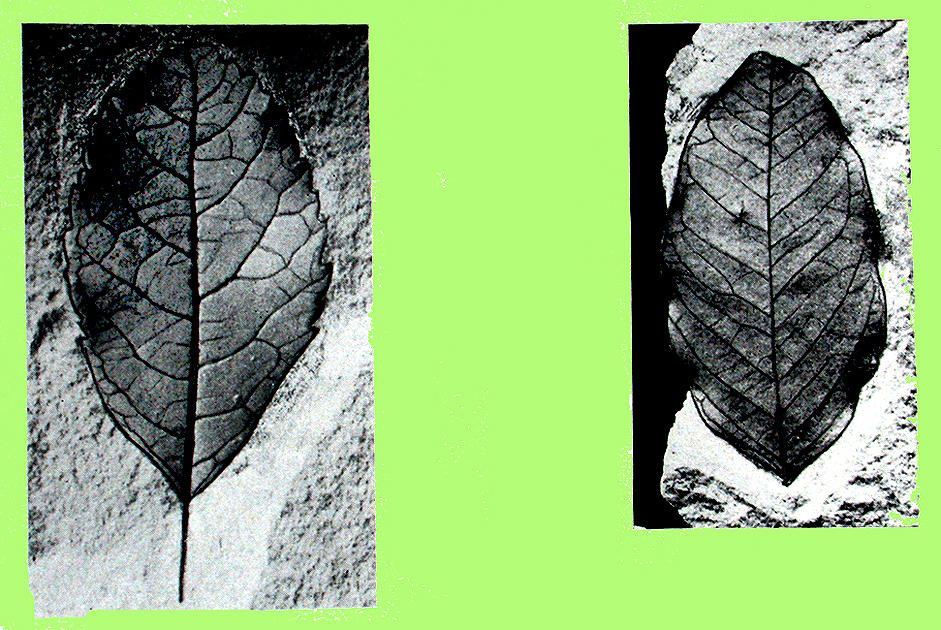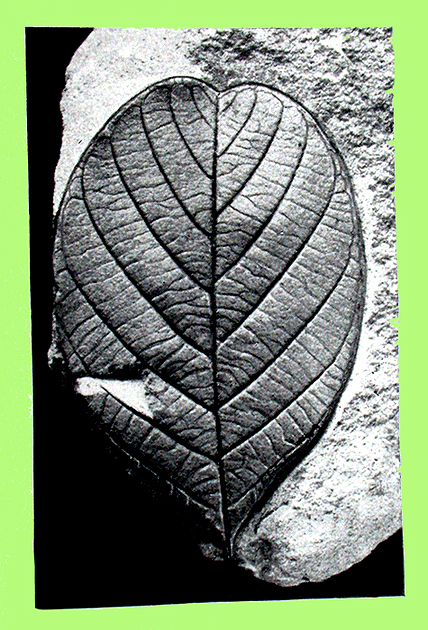



|
Left to right--Fossil leaves from the upper Eocene La Porte Tuff, secured from an abandoned hydraulic gold mine in the vicinity of La Porte, Sierra Nevada, California. Left and far right--Specimens of Davilla rugosa, the Eocene genus-species of the living Davilla kunthii, which is a woody vine or small tree now native to Belize, Bolivia, Brazil, Colombia, Costa Rica, Ecuador, French Guiana, Guatemala, Guyana, Honduras, Mexico (central, gulf area, southeast, and southwest), Nicaragua, Panamá, Peru, southwest Caribbean, Suriname, Trinidad-Tobago, and Venezuela. Prefers a moist to wet hilly pine forest habitat at elevations of 1,150 to 1,500 feet. Middle--Left to right: Ilex oregona and Sophora respandifolia: The Eocene varieties of Ilex paraguensis and Sophora sp., respectively. Common name for Ilex paraguensis is Yerba mate. In the holly genus. A small evergreen tree that typically grows from 13 to 26 feet high. Presently found in Argentina, Uruguay, Paraguay, and Brazil. Can grow at elevations up to 4,900 feet. Sophora respandifolia corresponds to no known specific living plant, but extant members of genus Sophoria (pea family) are native to southeast Europe, east Asia, tropical regions in Australia and the Pacific, western South America (Chile, Argentina and Juan Fernandez Is.), coastal Kenya south to South Africa and Madagascar, and coastal east Brazil. Photographs courtesy Susan S. Potbury, from her publication The La Porte Flora Of Plumas County, California, originally issued November 25, 1935; contained in Carnegie Institute of Washington Publication 465, 1937, Eocene Flora Of Western America. I edited and processed the images through photoshop; adding the green border, for one. Note--Always check with the US Forest Service to determine if unauthorized fossil collecting is allowed at the La Porte locality. |